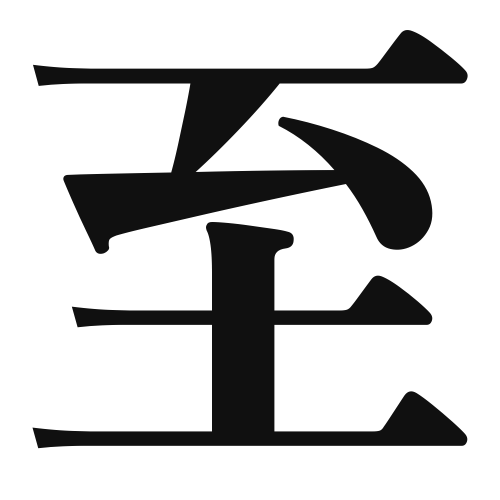1. Overview of Meaning
The kanji “至” (shi) generally means “to arrive” or “to reach.” It conveys the idea of arriving at a destination or achieving a certain state.
2. Formation and Radical
Formation of the Kanji: The kanji “至” is classified as a pictogram, originally depicting a person arriving at a place. It is also considered a ideogram as it represents the concept of reaching or arriving.
Radical: The radical for “至” is “至” itself, which is often associated with meanings related to arrival or reaching a point.
3. Examples of Usage
Common Words and Phrases: Some frequently used words that include “至” are “至急” (shikyuu – urgent) and “至福” (shifuku – supreme happiness).
Example Sentences in Daily Conversation:
- この問題は至急解決する必要があります。 (This problem needs to be resolved urgently.)
- 彼は至福の時を過ごしている。 (He is experiencing a time of supreme happiness.)
4. Synonyms and Antonyms
Similar Kanji: A similar kanji is “到” (tou), which also means “to arrive,” but it emphasizes the action of reaching a destination more than the state of being there.
Opposite Kanji: An antonym is “去” (kyo), which means “to leave” or “to go away,” representing the opposite action of departing from a place.
5. Cultural and Historical Background
Relation to Japanese Culture: The kanji “至” is often used in formal contexts, such as in letters or announcements, to indicate the importance of reaching a conclusion or decision.
Proverbs and Idioms: One common idiom is “至高の喜び” (shikou no yorokobi), which translates to “supreme joy,” reflecting the cultural appreciation for achieving happiness and fulfillment.
